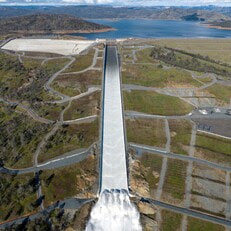 Lake Oroville Water Releases Continue The Department of Water Resources (DWR) continues to make releases from Lake Oroville using the main spillway at Oroville Dam. Ongoing releases ensure continued storage space in Lake Oroville for spring runoff from snowmelt and are closely coordinated with the U.S. Army Corps of Engineers and downstream water operators. Total releases to the Feather River amount to 15,000 cubic feet per second (cfs) with 3,500 cfs being routed down the low-flow channel which flows through the City of Oroville. An additional 11,500 cfs is being released from the Thermalito Afterbay River Outlet, located 5 miles downstream from Oroville. DWR continues to closely monitor lake levels and will adjust releases accordingly. Visitors to Oroville Dam may also notice minor amounts of water flowing from drains built into the emergency spillway. As the reservoir level has increased, water flow from the drains has increased, which is normal and expected with the emergency spillway design. The dam and emergency spillway continue to operate as intended. Since Dec. 1, Lake Oroville’s storage has increased more than 210 feet and gained over 2 million acre-feet of water. The Lake Oroville reservoir is the largest storage facility in the State Water Project (SWP) and supports environmental and water delivery needs to 27 million Californians and reduces flood risks to downstream communities. DWR continues to monitor lake levels, weather forecasts, and mountain snow levels to optimize operations for water storage and environmental protection while allowing for carryover storage into next year.  HEALTHY KIDS DAY Join the Oroville YMCA on Saturday, April 29 for a celebration of art in the community and Healthy Kids Day activities. Local Oroville schools and community groups will be showcasing performances in dance, theater, and music with visual arts and hands-on workshops. DWR’s Lake Oroville Visitor Center Guides will be promoting Healthy Kids Day activities with an information booth from 10 a.m. to 2 p.m. on how much water it takes to grow a healthy salad. A fun, hands-on activity will feature a coloring sheet that kids can cut out and glue together to create a healthy take-home salad! As we approach the summer recreation season, DWR will also be providing information on water safety for pools, rivers, and lakes. Stop by the Oroville Convention Center located at 1200 Myers Street from 10 a.m. to 5 p.m. to partake in a day of family-friendly activities. 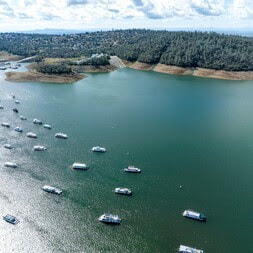 WATER ALLOCATIONS INCREASED DWR announced April 20 another increase in the forecasted State Water Project (SWP) deliveries this year. With reservoirs nearing capacity and snowmelt runoff starting to occur, DWR now expects to deliver 100 percent of requested water supplies, up from 75 percent announced in March. This water will be delivered throughout the year to the SWP’s 29 public water agencies that serve 27 million Californians and 750,000 acres of farmland. The last time the SWP allocated 100 percent was in 2006. San Luis Reservoir in Merced County, which holds water supply for both the SWP and U.S. Bureau of Reclamation’s Central Valley Project (CVP), is now full. Additionally, Lake Oroville, the SWP’s largest reservoir, and SWP reservoirs in Southern California are expected to be full by the end of May. Statewide, reservoir storage is at 105 percent of average for this date. “Water supply conditions and careful management of reservoir operations during this extreme winter allows DWR to maximize water deliveries while enhancing protections for the environment,” said DWR Director Karla Nemeth. “DWR is moving and storing as much water as possible to the benefit of communities, agriculture, and the environment.” More information on SWP allocations may be found in the press release. 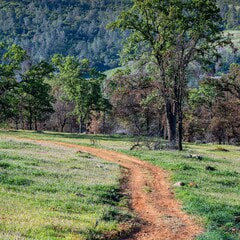 OROVILLE RECREATION DWR, State Parks, and CDFW maintain over 92 miles of trails in the Oroville area. Paved trails at the Lake Oroville Visitor Center, Spillway Day Use Area, and at the North Forebay Day Use Area offer accessible trails with only slight elevation changes. Other trails, such as the Brad Freeman Trail near Oroville Dam, offer steep elevation changes to challenge hikers and mountain bikers. The Saddle Dam Trailhead has facilities for equestrians, including a large parking area to accommodate horse trailers, water troughs, and hitching posts, and easy access to trails designated for hikers and horses. An interactive map of recreation facilities, including open boat ramps, and their permitted uses (hike, bike, horse, multi) is available on DWR’s Lake Oroville Recreation webpage. A paper trail map is available at various locations, including most entrance kiosks and the Visitor Center. Lake Oroville is one of the State Water Project’s premier recreational destinations and one of California’s best fishing spots. The lake provides both warm-water and cold-water fisheries. Below the Oroville Dam, the Thermalito Forebay, Thermalito Afterbay and the Feather River offer additional excellent fishing opportunities for Chinook salmon and steelhead. The marinas at Bidwell Canyon and Lime Saddle are open daily and provide a variety of services such as a shuttle and boat rentals. CURRENT LAKE OPERATIONS Lake Oroville is at 874 feet elevation and storage is approximately 3.15 million acre-feet (MAF), which is 89 percent of its total capacity and 119 percent of the historical average. The Feather River releases are at 15,000 cubic feet per second (cfs). Flows through the City of Oroville are 3,500 cfs with 11,500 cfs released from the Thermalito Afterbay Outlet (Outlet) for a total of 15,000 cfs downstream of the Outlet. DWR continues to assess releases to the Feather River daily. The public can track precipitation, snow, reservoir levels, and more at the California Data Exchange Center. The Lake Oroville gage station is identified as “ORO”. All data as of midnight 4/20/2023. 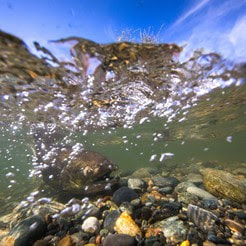 Lake Oroville Water Releases Continue The Department of Water Resources (DWR) continues to make releases from Lake Oroville using the main spillway at Oroville Dam. On Tuesday, DWR increased releases from Lake Oroville to the Feather River to assist with spring fish planting operations. Releases to the river will be further increased to 15,000 cubic feet per second (cfs) on Saturday and are expected to remain at this level through the weekend to account for higher inflow levels to the reservoir. The increase in water flow is performed to boost survival rates of spring-run Chinook salmon as they migrate from the Feather River to the ocean. Since March 16, DWR and the California Department of Fish and Wildlife (CDFW) have been releasing juvenile spring-run and fall-run Chinook salmon into the Feather River, including 880,000 spring-run Chinook salmon smolts released this week and an additional 500,000 fall-run Chinook salmon pre-smolts. Feather River releases are closely coordinated with the U.S. Army Corps of Engineers and downstream water operators. DWR continues to monitor lake inflow levels from spring snowmelt and will adjust releases accordingly. Since Dec. 1, Lake Oroville’s storage has increased more than 200 feet and gained 2 million acre-feet of water. The Lake Oroville reservoir is the largest storage facility in the State Water Project (SWP) and supports environmental and water delivery needs to 27 million Californians and reduces flood risks to downstream communities. DWR continues to monitor lake levels, weather forecasts, and mountain snow levels to optimize operations for water storage and environmental protection while allowing for carryover storage into next year. 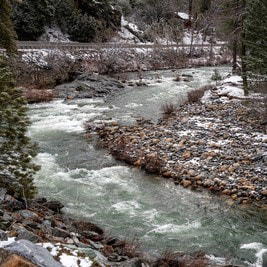 WATER SAFETY With this season’s statewide snowpack at 237% of average as of April 3, California State Parks’ Division of Boating and Waterways (DBW), DWR and the California Department of Forestry and Fire Protection (CAL FIRE) are urging the public to take extra precautions and to be aware of cold-water dangers this spring to avoid a tragedy. The series of winter storms is causing rising river and stream flow levels not seen in years. The eventual spring warm-up will bring fast flows and cold temperatures when all that snow starts to melt. All Californians are being encouraged to wait until summer to recreate in the water, when conditions are safer. “California has one of the largest snowpacks on record,” said DWR Director Karla Nemeth. “As this snowpack melts in the coming months, the waterways will be especially cold, fast and running higher than normal. Be aware of fluctuating water levels. We want everyone to always make safety a top priority when recreating.” All three departments hope to educate not only regular water enthusiasts but occasional visitors to high, fast-running waterways who may venture near the edge to test the water or take selfies. Just one slip or unwatched child can become a devastating drowning statistic. Review key safety points to know before heading outside. 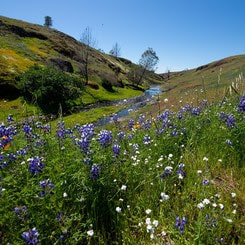 EARTH WEEK ACTIVITIES Celebrate Earth Week at the Lake Oroville Visitor Center April 17-21. Join our guides for fun, family-friendly activities throughout the week. Each day is an opportunity to show your love for our planet and its precious water through free fun activities, engaging story times, movies, or crafts. Located at 917 Kelly Ridge Rd in Oroville, the Visitor Center is open Monday through Friday from 9 a.m. to 5 p.m.
Lake Oroville is one of the State Water Project’s premier recreational destinations and one of California’s best fishing spots. The lake provides both warm-water and cold-water fisheries. Below the Oroville Dam, the Thermalito Forebay, Thermalito Afterbay and the Feather River offer additional excellent fishing opportunities for Chinook salmon and steelhead. The marinas at Bidwell Canyon and Lime Saddle are open daily and provide a variety of services such as a shuttle and boat rentals. DWR, State Parks, and CDFW maintain over 92 miles of trails in the Oroville area. Paved trails at the Lake Oroville Visitor Center, Spillway Day Use Area, and at the North Forebay Day Use Area offer accessible trails with only slight elevation changes. Other trails, such as the Brad Freeman Trail near Oroville Dam, offer steep elevation changes to challenge hikers and mountain bikers. The Saddle Dam Trailhead has facilities for equestrians, including a large parking area to accommodate horse trailers, water troughs, and hitching posts, and easy access to trails designated for hikers and horses. An interactive map of recreation facilities, including open boat ramps, and their permitted uses (hike, bike, horse, multi) is available on DWR’s Lake Oroville Recreation webpage. A paper trail map is available at various locations, including most entrance kiosks and the Visitor Center. CURRENT LAKE OPERATIONS Lake Oroville is at 870 feet elevation and storage is approximately 3.08 million acre-feet (MAF), which is 87 percent of its total capacity and 118 percent of the historical average. The Feather River releases are at 10,500 cubic feet per second (cfs). Flows through the City of Oroville are 3,700 cfs with 7,800 cfs released from the Thermalito Afterbay Outlet (Outlet) for a total of 10,500 cfs downstream of the Outlet. Releases to the Feather River will increase to 15,000 cfs on Saturday with flows of 3,500 cfs through the City of Oroville. DWR continues to assess releases to the Feather River daily. The public can track precipitation, snow, reservoir levels, and more at the California Data Exchange Center. The Lake Oroville gage station is identified as “ORO”. All data as of midnight 4/13/2023. 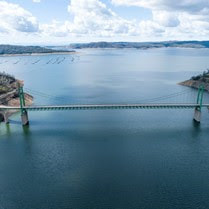 Lake Oroville Water Releases Continue The Department of Water Resources (DWR) continues to make releases from Lake Oroville using the main spillway at Oroville Dam. Ongoing releases ensure continued storage space in Lake Oroville for spring runoff from rain and snowmelt and are closely coordinated with the U.S. Army Corps of Engineers and downstream water operators. Total releases to the Feather River amount to 7,500 cubic feet per second (cfs) with 1,000 cfs being routed down the low-flow channel which flows through the City of Oroville. An additional 6,500 cfs is being released from the Thermalito Afterbay River Outlet, located 5 miles downstream from Oroville. DWR continues to closely monitor lake levels and will adjust releases accordingly. Releases to the Feather River may be increased temporarily in the coming weeks to assist with fish planting operations. Since Dec. 1, Lake Oroville’s storage has increased approximately 200 feet and gained just under 2 million acre-feet of water. The Lake Oroville reservoir is the largest storage facility in the State Water Project (SWP) and supports environmental and water delivery needs to 27 million Californians and reduces flood risks to downstream communities. DWR continues to monitor lake levels, weather forecasts, and mountain snow levels to optimize operations for water storage and environmental protection while allowing for carryover storage into next year. 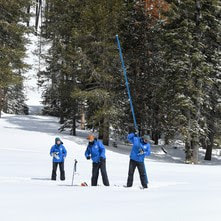 DWR CONDUCTS APRIL SNOW SURVEY DWR conducted the fourth snow survey of the season at Phillips Station on April 3. The manual survey recorded 126.5 inches of snow depth and a snow water equivalent of 54 inches, which is 221 percent of average for this location on April 3. The snow water equivalent measures the amount of water contained in the snowpack and is a key component of DWR’s water supply forecast. DWR’s electronic readings from 130 snow sensors placed throughout the state indicate the statewide snowpack’s snow water equivalent is 61.1 inches, or 237 percent of average for this date. This year’s April 1 result from the statewide snow sensor network is higher than any other reading since the snow sensor network was established in the mid-1980s. Before the network was established, the 1983 April 1 statewide summary from manual snow course measurements was 227 percent of average. The 1952 April 1 statewide summary for snow course measurements was 237 percent of average. “This year’s result will go down as one of the largest snowpack years on record in California,” said Sean de Guzman, manager of DWR’s Snow Surveys and Water Supply Forecasting Unit. “While 1952’s snow course measurements showed a similar result, there were fewer snow courses at that time, making it difficult to compare to today’s results. Because additional snow courses were added over the years, it is difficult to compare results accurately across the decades with precision, but this year’s snowpack is definitely one of the biggest the state has seen since the 1950s.” For more information about the April snow survey, read DWR’s press release. 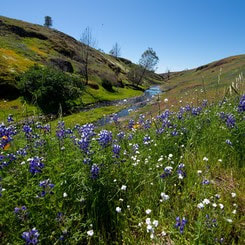 EARTH WEEK ACTIVITIES Celebrate Earth Week at the Lake Oroville Visitor Center April 17-21. Join our guides for fun, family-friendly activities throughout the week. Each day is an opportunity to show your love for our planet and its precious water through free fun activities, engaging story times, movies, or crafts. Located at 917 Kelly Ridge Rd in Oroville, the Visitor Center is open Monday through Friday from 9 a.m. to 5 p.m.
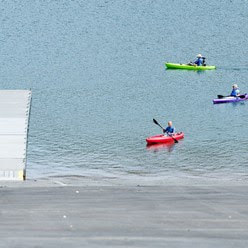 OROVILLE RECREATION DWR, State Parks, and CDFW maintain over 92 miles of trails in the Oroville area. Paved trails at the Lake Oroville Visitor Center, Spillway Day Use Area, and at the North Forebay Day Use Area offer accessible trails with only slight elevation changes. Other trails, such as the Brad Freeman Trail near Oroville Dam, offer steep elevation changes to challenge hikers and mountain bikers. The Saddle Dam Trailhead has facilities for equestrians, including a large parking area to accommodate horse trailers, water troughs, and hitching posts, and easy access to trails designated for hikers and horses. An interactive map of recreation facilities, including open boat ramps, and their permitted uses (hike, bike, horse, multi) is available on DWR’s Lake Oroville Recreation webpage. A paper trail map is available at various locations, including most entrance kiosks and the Visitor Center. The marinas at Bidwell Canyon and Lime Saddle are open daily and provide a variety of services such as a shuttle and boat rentals. CURRENT LAKE OPERATIONS Lake Oroville is at 860 feet elevation and storage is approximately 2.94 million acre-feet (MAF), which is 83 percent of its total capacity and 115 percent of the historical average. Dry weather conditions will be returning to the area next week. The Feather River releases are at 7,500 cubic feet per second (cfs). Flows through the City of Oroville are 1,000 cfs with 6,500 cfs released from the Thermalito Afterbay Outlet (Outlet) for a total of 7,500 cfs downstream of the Outlet. DWR continues to assess releases to the Feather River daily. The public can track precipitation, snow, reservoir levels, and more at the California Data Exchange Center. The Lake Oroville gage station is identified as “ORO”. All data as of midnight 4/6/2023. |
Archives
May 2024
Categories
All
|

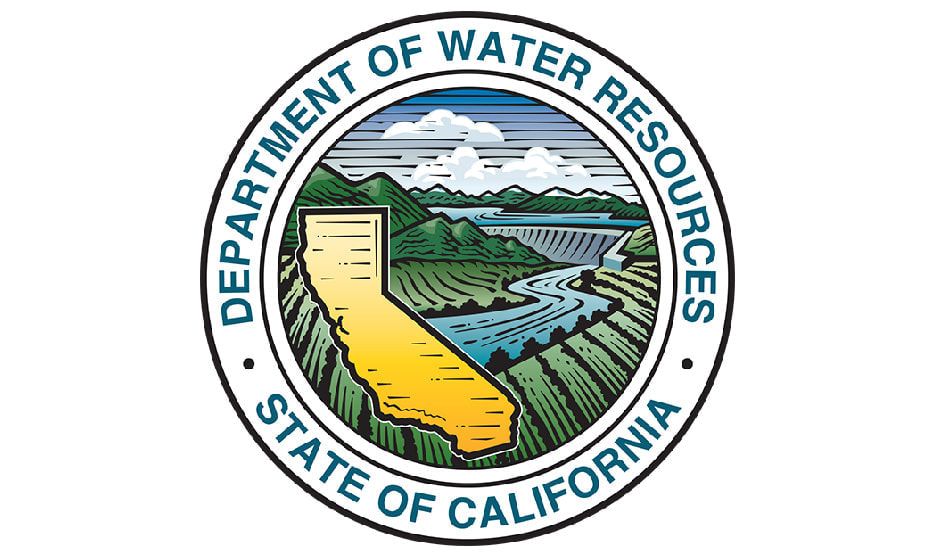
 RSS Feed
RSS Feed